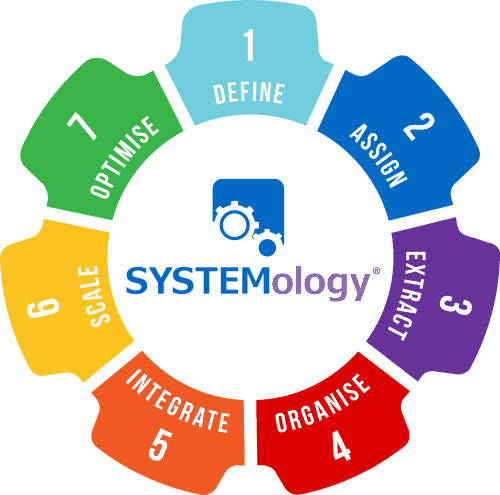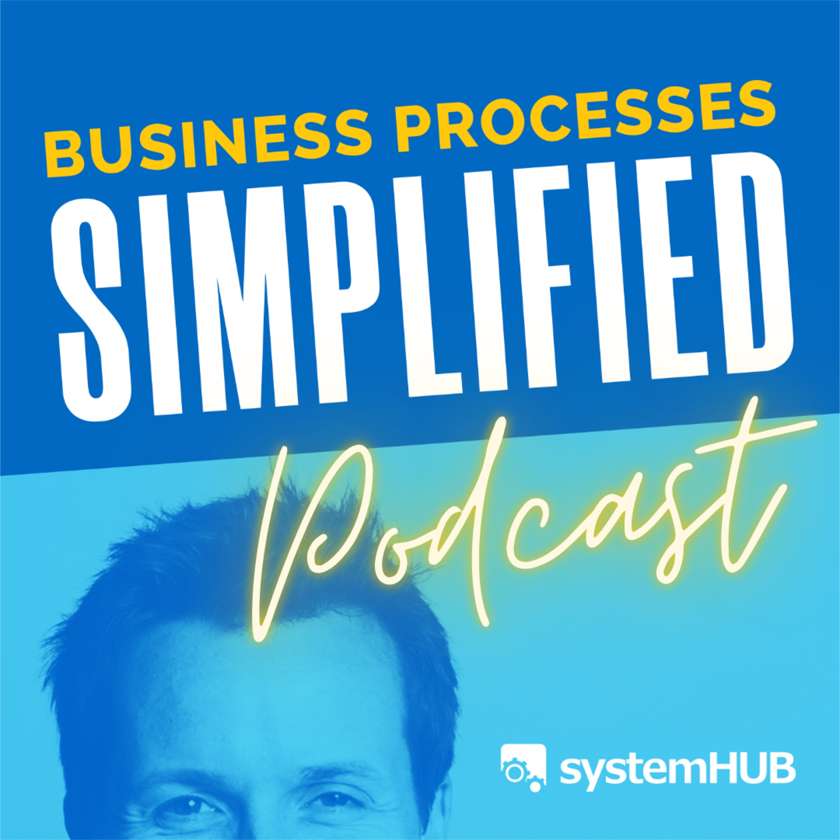Business owners hear it all the time: “you need systems.”
But when you ask, “what is a business system?” the answers are often vague. Is it a checklist? A piece of software? A way of working?
The truth is, a business system is all of these things and more. In today’s environment, especially with AI reshaping how we work, understanding and implementing business systems has become the difference between scaling smoothly and staying stuck.

Defining a Business System
A business system is a structured procedure, process, or method designed to achieve a specific result. It has components, interrelated steps, and a purpose: to deliver consistent outcomes that benefit the business and its customers.
It helps to clarify terms:
- System: The big picture. A collection of processes and procedures working together toward a goal.
- Process: A sequence of steps that make up a system.
- Procedure: The specific instructions or checklist for completing one of those steps.
Michael Gerber, author of The E-Myth Revisited, famously said: “Organize around business functions, not people. Build systems within each business function. Let systems run the business and people run the systems. People come and go, but the systems remain constant.”
SYSTEMology, my framework, takes this further. It provides a structured method for capturing and organizing systems so business owners can step out of the daily grind.
Why Business Systems Matter
Consistency and Quality
Without systems, quality depends on who shows up that day. With systems, customers get a consistent experience every time. Whether it’s your sales process or your product delivery, consistency builds trust and repeat business.
Scalability and Growth
You cannot scale chaos. Systems are the only way to grow beyond the owner’s direct involvement. They allow you to replicate success, onboard staff quickly, and create value that makes your business more attractive to buyers.
Efficiency and Profitability
Systems eliminate waste. They reduce mistakes, streamline operations, and increase margins. More importantly, they free up the business owner’s time so they can focus on strategy, innovation, or simply enjoying life outside work.
Examples of Business Systems
Every part of your business is made up of systems. Here are common examples:
- Marketing systems: Lead generation, advertising, content creation
- Sales systems: Discovery calls, proposals, follow-up, conversion
- Operations systems: Order fulfillment, quality control, logistics
- Finance systems: Invoicing, collections, payroll, budgeting
- HR systems: Hiring, onboarding, training, performance reviews

Think of them as building blocks. Each system contains subsystems. For instance, your marketing system may include a lead generation subsystem, which itself might include email campaigns, paid ads, or referrals. The more intentional you are about mapping these, the stronger your business foundation becomes.
Building Blocks of Effective Systems
Core Elements
An effective system usually has these elements:
- Design: Clear intent and structure
- Components: Tools and resources
- Roles & responsibilities: Who owns what
- Speed: Ability to perform efficiently
- Measurement: Metrics to track performance
The 7 Stages of SYSTEMology
- Define: Identify critical processes.
- Assign: Choose who will capture them.
- Extract: Document from the person doing the work.
- Organize: Store in a central hub.
- Integrate: Train your team.
- Scale: Expand across the business.
- Optimize: Refine and improve.

The Role of a Systems Champion
The owner should not be documenting everything. That’s where the Systems Champion comes in, a dedicated team member responsible for driving systemization. Today, they can be supercharged with AI tools that help capture, improve, and even automate steps.
Real-World Proof: Companies Built on Systems
History proves the power of systems:
- McDonald’s mastered consistency in fast food.
- FedEx built an empire on overnight logistics systems.
- Google scaled search through automated, reliable systems.
Thousands of companies thrive because they systemized early. Many SYSTEMology clients have grown from small teams to industry leaders simply by implementing a systematic approach.
Common Mistakes in Creating Systems
- Overcomplicating documentation: Simplicity wins. Start with checklists.
- Failing to get team buy-in: Systems must be co-created with the people who use them.
- Letting systems get lost: Avoid the chaos of scattered Google Docs by using a central hub.
- Not assigning ownership: Every system needs a responsible person.
- Never optimizing: Systems should evolve as your business does.
How to Create a Business System in 2025
Step 1 – Identify your critical client flow
Focus on the journey that delivers your core product or service. Document it first.
Step 2 – Capture with checklists and templates
Keep it simple. A system can start as a one-page checklist.
Step 3 – Store in one hub (systemHUB)
Centralize everything so your team always knows where to look.
Step 4 – Train and integrate with your team
Introduce systems gradually and train staff to use them.
Step 5 – Use AI tools for speed and optimization
AI can help capture knowledge, suggest improvements, and even automate repetitive steps.
The Future of Business Systems
We are entering an AI-first era. Systems will become the bridge between human creativity and machine efficiency. Companies that harness both will dominate. 2025 is a tipping point, businesses that ignore systemization will struggle, while those that embrace it will thrive.
Conclusion
A business system is more than a checklist. It is the DNA of your company. Systems create consistency, scalability, efficiency, and profit. Start small, systemize your critical flow, and build from there. If you want freedom as a business owner, systems are the way.

Explore SYSTEMology, train a Systems Champion, or try systemHUB to get started.








